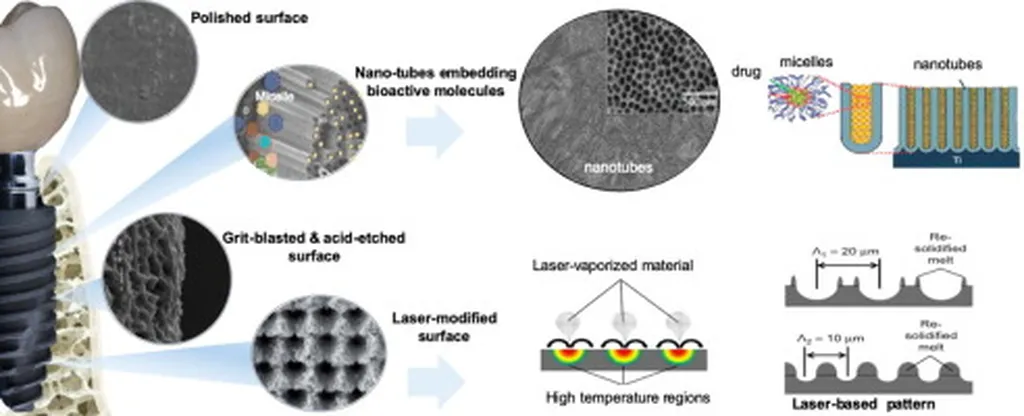In the quest to enhance the bioactivity and cell-implant interaction of titanium alloys, researchers have made a significant stride. Elisiane de Santana Chaves, a leading expert in biomaterials from the Federal University of Campina Grande, Brazil, has published a groundbreaking study in the journal ‘Pesquisa de Materiais’ (Materials Research) that sheds light on the intricate relationship between substrate chemical homogeneity and nanotube formation in Ti-35Nb-xSi alloys.
The study focuses on the electrochemical anodizing process, a technique used to modify the surface of β-Ti alloys, producing TiO2 nanotubes and nanopores that significantly improve bioactivity. The addition of elements like Nb and Si, known for their beneficial biological properties, makes this process even more advantageous. However, the microstructural and compositional characteristics of these alloys can affect the formation, organization, and uniformity of these nanotubes.
Chaves and her team produced Ti-35Nb-xSi alloys and analyzed the microstructure and formation of TiO2 nanostructures in both as-cast and water quenched (WQ) conditions. Their findings revealed that the addition of Si reduced the precipitation of the ω-phase, making the β-phase more stable and forming the (Ti,Nb)5Si3 compound for as-cast and (Ti,Nb)3Si compound for WQ.
“The growth of nanostructured and hydrophilic layers was significantly benefited from the chemical homogeneity of the substrate after heat treatment,” Chaves explained. “However, Si-rich regions affected nanotube formation and the size of their diameters.”
This research holds substantial commercial implications, particularly for the energy sector. The enhanced bioactivity and cell-implant interaction facilitated by these modified titanium alloys can lead to more efficient and durable medical implants, reducing the need for replacements and improving patient outcomes. Moreover, the improved understanding of the anodizing process and the role of substrate chemical homogeneity can pave the way for more advanced and specialized applications in biomaterials.
As Chaves noted, “This study not only advances our understanding of the anodizing process but also opens up new avenues for the development of next-generation biomaterials.”
The findings published in ‘Pesquisa de Materiais’ (Materials Research) are a testament to the ongoing innovation in the field of biomaterials. By unraveling the complexities of substrate chemical homogeneity and its impact on nanotube formation, Chaves and her team have laid the groundwork for future developments that could revolutionize the energy sector and beyond.

